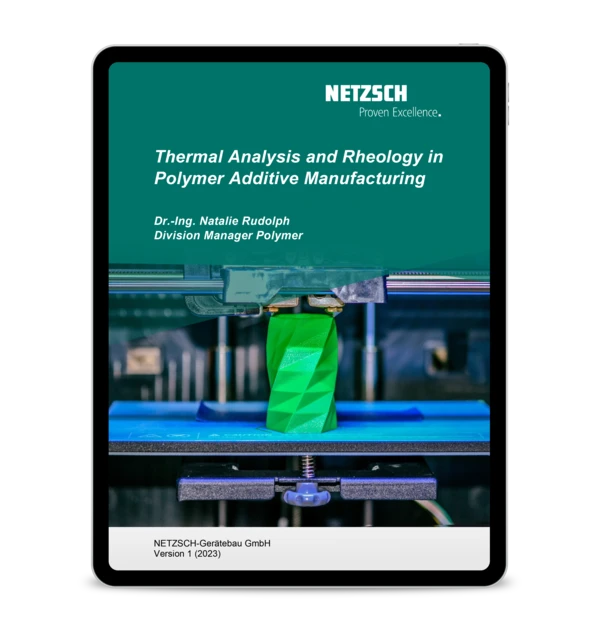
23.06.2021 by Milena Riedl, Dr. Natalie Rudolph
Materiałoznawstwo w produkcji addytywnej: Zrozumienie zachowania termoutwardzalnych materiałów podczas utwardzania
Tworzywa termoutwardzalne są nieodwracalnie utwardzane przezUtwardzanie (reakcje sieciowania)W dosłownym tłumaczeniu termin "sieciowanie" oznacza "tworzenie sieci". W kontekście chemicznym stosuje się go do reakcji, w których cząsteczki są łączone ze sobą poprzez wprowadzenie wiązań kowalencyjnych i tworzenie trójwymiarowych sieci. utwardzanie. Dowiedz się więcej o dwóch różnych sposobach utwardzania tworzyw termoutwardzalnych, które są wykorzystywane w procesach wytwarzania przyrostowego.
Wcześniej wyjaśniliśmy strukturę molekularną tworzyw termoutwardzalnych i sposób, w jaki gęstość usieciowania i wynikające z niej właściwości materiału są ze sobą powiązane. Tworzywa termoutwardzalne są nieodwracalnie utwardzane przezUtwardzanie (reakcje sieciowania)W dosłownym tłumaczeniu termin "sieciowanie" oznacza "tworzenie sieci". W kontekście chemicznym stosuje się go do reakcji, w których cząsteczki są łączone ze sobą poprzez wprowadzenie wiązań kowalencyjnych i tworzenie trójwymiarowych sieci. utwardzanie. W produkcji addytywnej (AM) stosowane są dwa różne sposoby utwardzania termoutwardzalnych materiałów: Utwardzanie UV iUtwardzanie (reakcje sieciowania)W dosłownym tłumaczeniu termin "sieciowanie" oznacza "tworzenie sieci". W kontekście chemicznym stosuje się go do reakcji, w których cząsteczki są łączone ze sobą poprzez wprowadzenie wiązań kowalencyjnych i tworzenie trójwymiarowych sieci. utwardzanie termiczne.
Temat tego tygodnia: Utwardzanie tworzyw termoutwardzalnych
- Różnica między utwardzaniem UV a utwardzaniem termicznym na przykładach z produkcji addytywnej
- Różne typy reakcji chemicznych: Radical i Cationic Fotopolimeryzacja
- Czym są przenikające się sieci polimerowe i dlaczego są one ważne w AM?

DARMOWY e-book
Analiza termiczna i reologia w produkcji dodatków polimerowych
Odkryj sekrety kryjące się za przełomowymi możliwościami AM! Nasz nowo wydany ebook zagłębia się w sedno AM, ujawniając moc niezawodnych technik charakteryzacji materiałów, w szczególności analizy termicznej i reologii.
Więcej treści dotyczących wytwarzania przyrostowego według NETZSCH
Fotopolimery zyskały na znaczeniu w wielu gałęziach przemysłu. Cyfrowa Synteza Światła (DLS), technologia wytwarzania przyrostowego, jest doskonałym przykładem zastosowania fotopolimerów, ponieważ nie byłaby możliwa bez tych materiałów. Dowiedz się, dlaczego NETZSCH Photo-DSC oferuje sprawdzoną metodę optymalizacji procesu produkcji addytywnej. Przeczytaj artykuł tutaj!